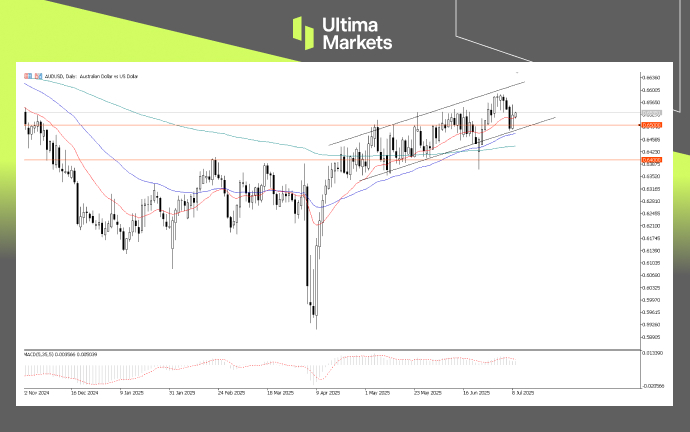Important Information
This website is managed by Ultima Markets’ international entities, and it’s important to emphasise that they are not subject to regulation by the FCA in the UK. Therefore, you must understand that you will not have the FCA’s protection when investing through this website – for example:
- You will not be guaranteed Negative Balance Protection
- You will not be protected by FCA’s leverage restrictions
- You will not have the right to settle disputes via the Financial Ombudsman Service (FOS)
- You will not be protected by Financial Services Compensation Scheme (FSCS)
- Any monies deposited will not be afforded the protection required under the FCA Client Assets Sourcebook. The level of protection for your funds will be determined by the regulations of the relevant local regulator.
Note: Ultima Markets is currently developing a dedicated website for UK clients and expects to onboard UK clients under FCA regulations in 2026.
If you would like to proceed and visit this website, you acknowledge and confirm the following:
- 1.The website is owned by Ultima Markets’ international entities and not by Ultima Markets UK Ltd, which is regulated by the FCA.
- 2.Ultima Markets Limited, or any of the Ultima Markets international entities, are neither based in the UK nor licensed by the FCA.
- 3.You are accessing the website at your own initiative and have not been solicited by Ultima Markets Limited in any way.
- 4.Investing through this website does not grant you the protections provided by the FCA.
- 5.Should you choose to invest through this website or with any of the international Ultima Markets entities, you will be subject to the rules and regulations of the relevant international regulatory authorities, not the FCA.
Ultima Markets wants to make it clear that we are duly licensed and authorised to offer the services and financial derivative products listed on our website. Individuals accessing this website and registering a trading account do so entirely of their own volition and without prior solicitation.
By confirming your decision to proceed with entering the website, you hereby affirm that this decision was solely initiated by you, and no solicitation has been made by any Ultima Markets entity.
I confirm my intention to proceed and enter this websiteRBA Holds Rate at 3.85%, Defying Market Expectation
The Reserve Bank of Australia (RBA) kept its cash rate unchanged at 3.85% at its July 8 meeting, surprising markets that had largely priced in a 25bps cut. The decision stunned investors, with the central bank opting for a more cautious stance amid lingering uncertainty and rising global trade risks.
The board vote was reportedly split, with three of nine members supporting an immediate rate cut while six voted to hold steady—marking a rare display of internal division. However, Governor Michele Bullock emphasized that the decision was “more about timing than direction,” signaling that the board remains open to rate cuts—potentially as soon as the August meeting.
RBA: Patience, Data-Dependent, and Global Trade Risk
In its policy statement, the RBA acknowledged that inflation had moved closer to its 2–3% target band, but stressed that the improvement had only been evident for one quarter. Officials also cited rising external risks, including renewed U.S. tariff threats, as a reason to wait for clearer signals.
“Inflation has come down, but we need more data to confirm the trend is sustainable,” Bullock said, referring to the upcoming Q2 CPI release on July 30, which is expected to be a key trigger for any future policy shift.
“The RBA’s tone suggests this is a pause, not a pivot,” said Shawn Lee, Senior Market Analyst at Ultima Markets. “Markets should now turn their attention to the July CPI and how BRICS-U.S. trade tensions may affect risk sentiment.”
Markets are now widely expecting the RBA to cut rates in August, should inflation continue to trend lower. However, global volatility, especially related to U.S. fiscal moves and commodity prices, could complicate the policy path.
Market Impact: AUD Strengthens, Bond Yields Jump
The Australian dollar (AUD/USD) rose around 0.8% to approximately 0.6543 after the decision, while bond yields climbed. 3-year yields rose from 3.36% to 3.43%, and 10-year yields edged up from 4.23% to 4.27%.

AUDUSD, Day-Chart Analysis | Source: Ultima Market MT5
From a technical perspective, the narrowing uptrend in AUD/USD remains intact, with the pair trading above the 0.6500 psychological mark, suggesting that further upside is still possible.
However, traders should remain cautious of emerging global trade risks, as the Australian Dollar is a risk-sensitive currency. Any escalation in global tensions could lead to renewed downside pressure.
What’s Coming Next
- June-quarter CPI (July 30): This data release will likely determine whether the RBA proceeds with a rate cut in August.
- Board Meeting (August 12): With new inflation data, the bank will reassess the path for easing, cut is likely if inflation remains evident in Q2.
- Global Trade Risk: Ongoing U.S. tariff developments will continue to influence the RBA’s cautious stance on cutting rates.
Disclaimer
Comments, news, research, analysis, price, and all information contained in the article only serve as general information for readers and do not suggest any advice. Ultima Markets has taken reasonable measures to provide up-to-date information, but cannot guarantee accuracy, and may modify without notice. Ultima Markets will not be responsible for any loss incurred due to the application of the information provided.
Why Trade Metals & Commodities with Ultima Markets?
Ultima Markets provides the foremost competitive cost and exchange environment for prevalent commodities worldwide.
Start TradingMonitoring the market on the go
Markets are susceptible to changes in supply and demand
Attractive to investors only interested in price speculation
Deep and diverse liquidity with no hidden fees
No dealing desk and no requotes
Fast execution via Equinix NY4 server








